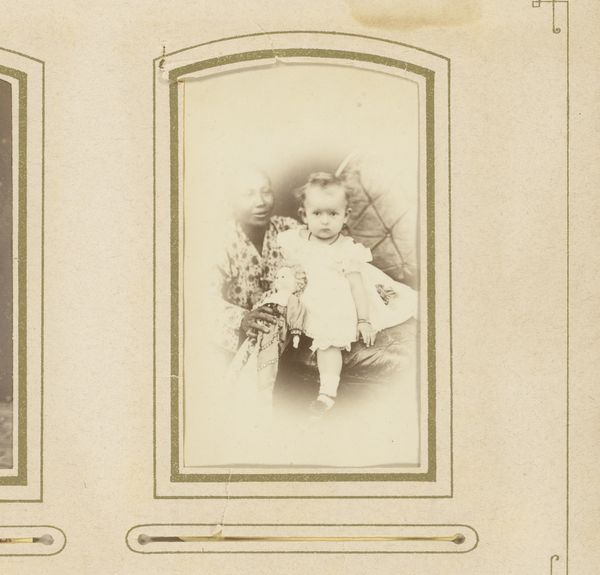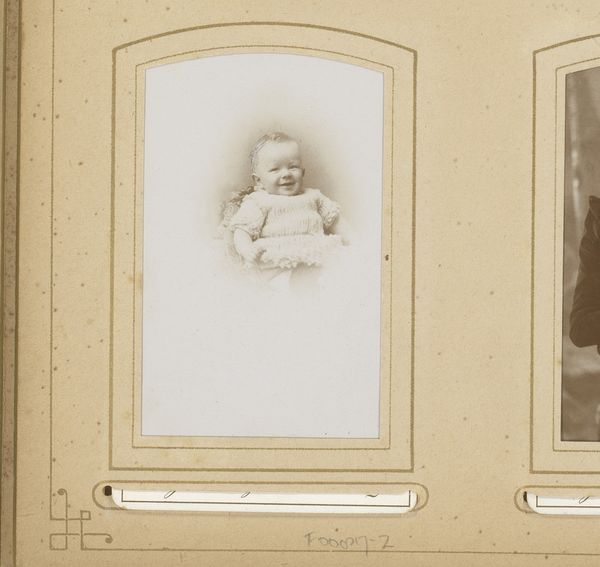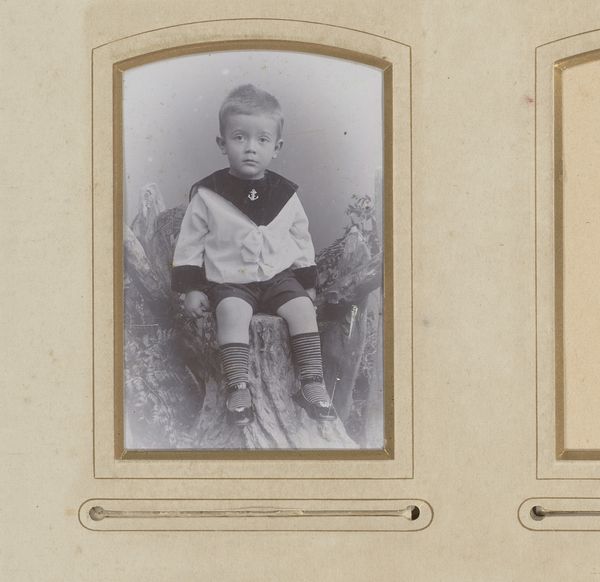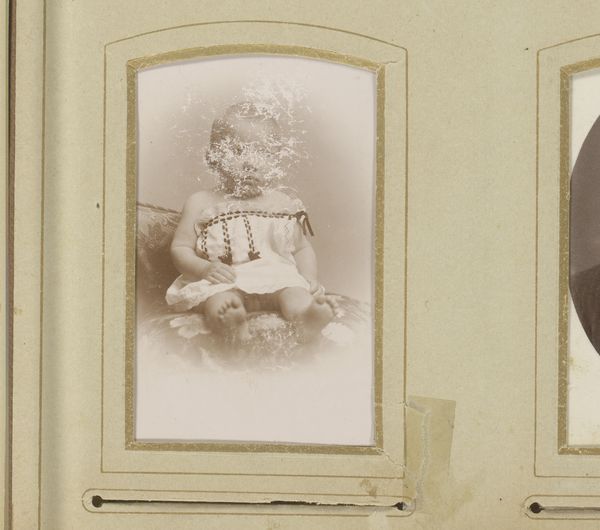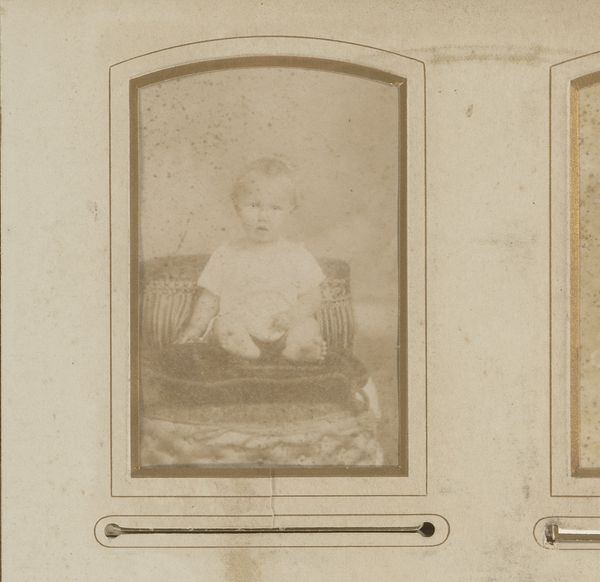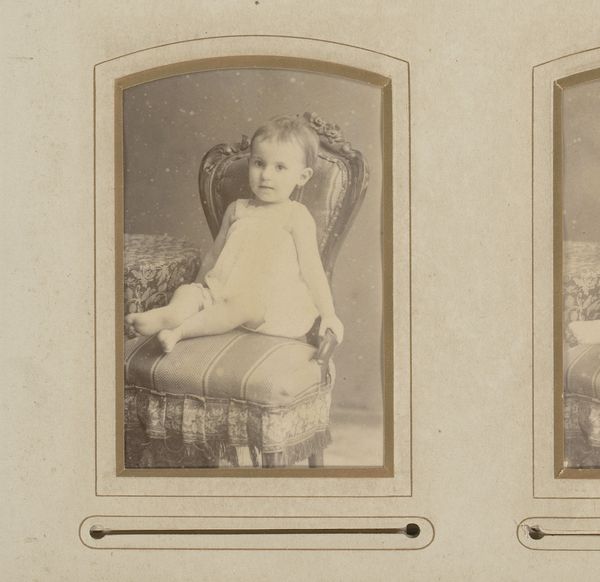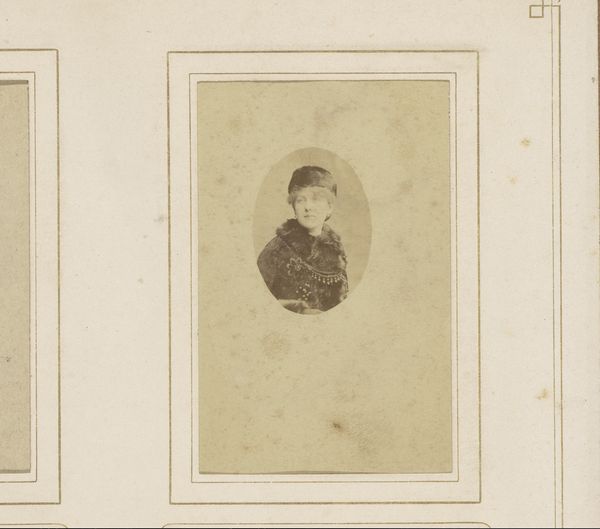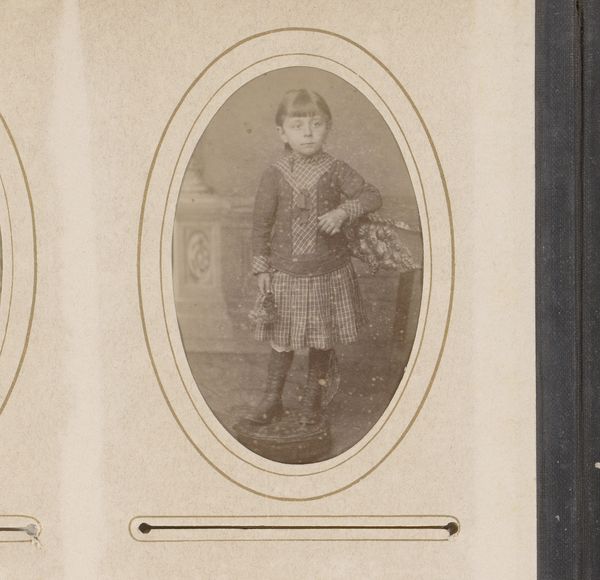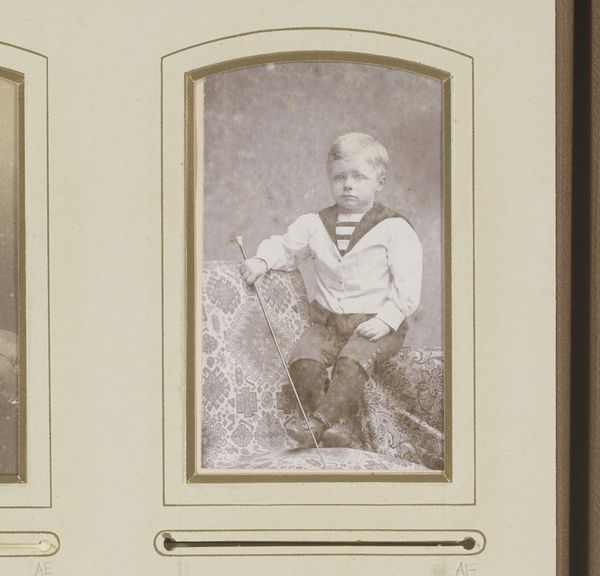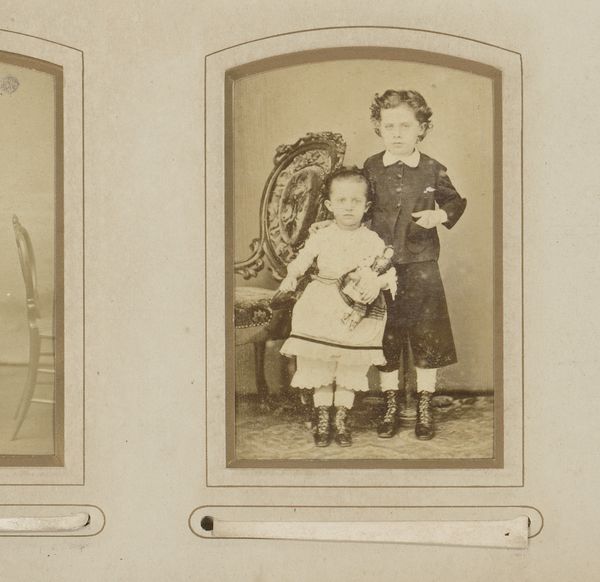
photography
#
portrait
#
still-life-photography
#
book
#
photography
#
child
#
genre-painting
#
academic-art
Dimensions: height 82 mm, width 53 mm
Copyright: Rijks Museum: Open Domain
Curator: Here we have a photograph from around 1870 by A. Blavet, titled “Portrait of a Child, Standing by a Table with Books.” It's a charming example of portraiture from the late 19th century, showcasing academic art through still-life photography. Editor: It’s… curious. There's such a stillness, almost an anticipation of something unseen in that child's eyes. And those books! They add such weight to the scene, a world of potential and knowledge resting right there on the table. Curator: The books certainly weren't accidental. They were highly symbolic in this period, representing learning, social status and, importantly, the promise of upward mobility through education. Positioning the child next to them speaks volumes about societal aspirations. Editor: I'm fascinated by the child’s pose and dress too. It's as though he's playing a miniature adult, that checked pattern mimicking perhaps the garb of a respected figure of the time. What stories are we being told through such representation? Is this portrait about inheritance? Curator: Very possibly. Remember, portraiture was a powerful tool for projecting family legacy and virtue, and photography made that accessible to a broader segment of society. Consider the subtle messages—discipline, intellect, perhaps even patriotism if the pattern on the dress does point to a familial lineage. Editor: It is a powerful means of controlling how future generations might see their own lineage. Looking into this child's face now, across more than a century, the clothing feels like a message meant to survive across time. The setting with its aged aesthetic enhances a profound longing or cultural memory that such an image embodies. Curator: I agree; there's something haunting in the staging. Photography allowed for this capture of ephemeral moments, freezing not just faces but also the societal currents of an era for a later audience to unpack. It serves as a material testament to a specific ambition—a child ready to face his education. Editor: Thinking about the child and the books juxtaposed evokes the timeless symbology surrounding the acquisition of knowledge— innocence poised to discover profound or possibly dangerous concepts and ideologies. This child becomes symbolic of entire generations stepping into new realms. Curator: Precisely, we witness within the image not just an individual portrait, but the complex social and political hopes invested in the rising generation. Editor: Looking closer makes the image’s layers ever more haunting, reflecting humanity’s enduring preoccupation with both recording time and creating messages for posterity.
Comments
No comments
Be the first to comment and join the conversation on the ultimate creative platform.
